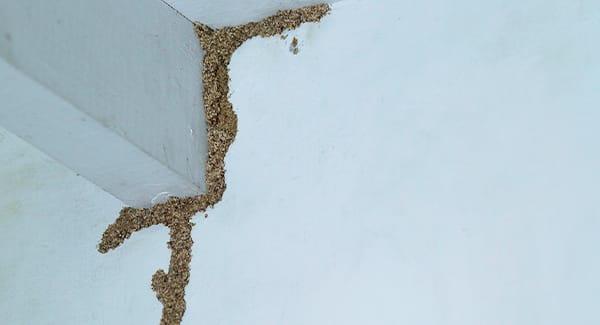Date Posted: October 21, 2019
Category: Termites

No matter how quiet they are, you wouldn’t want these six-legged guests seated comfortably at the dinner table during mealtimes.
Termites are dangerous and destructive household pests that can level entire homes within years if their populations are large enough. Thankfully, the New England region only regularly deals with one type of these wood-eating insects: subterranean termites.
Subterranean means ‘under the ground,’ meaning that these bugs won’t be spotted crawling around above ground, without cover. Despite their destructive behaviors, termites are vital to the ecosystem. Their penchant for woody snacks assists in the breaking down and decaying of cellulose material like wood. Without this vital service and the millions of swarms of termites that carry it out, the world would be a much different place. In fact, termites are so prolific that many places all over the world eat termites for snacks and meals.
Know the Signs
Termite infestations may be difficult to identify but there are several warning signs that help to alert homeowners to a potential threat.
-
Termites need constant moisture to live, so they will never willingly go out into the elements. To combat this, termites create mud tubes that branch up walls and across floors. Breaking these tubes apart will reveal termites scurrying up and down from their food source to the nest.
-
Some of the first signs of termite activity can look like water damage. Heavy or sagging wooden furniture, bowing walls, or lines eroded into the grain of wood may not be as it appears. Specks of mud or tracks may lead away from the wood, hollowed from the inside. This is a sure sign of the beginnings of a mature infestation.
-
Another telltale sign of an infestation is the sighting of swarmers, or flying termites. Every spring, winged termites are released from a colony to search for and establish new nests. Swarmers cannot bite, sting, or eat wood at this stage of development, but spotting some around the house may mean that you're at risk for an infestation.
If any of the above signs are present on your property, reach out to a professional for a home inspection immediately.
Big Blue Bug Has a Solution for You
Subterranean termites are extremely difficult to prevent, but keeping an eye out for warning signs and staying in contact with your local pest control professional can help. The only way to get rid of termites once they have established themselves is with professional protection. Contact Big Blue Bug today for comprehensive solutions for your termite infestations and beyond.
Our hardworking professionals are dedicated to ensuring your home stays pest-free all year long with incredible service, speed, and specialty. Call us todayto learn more.



